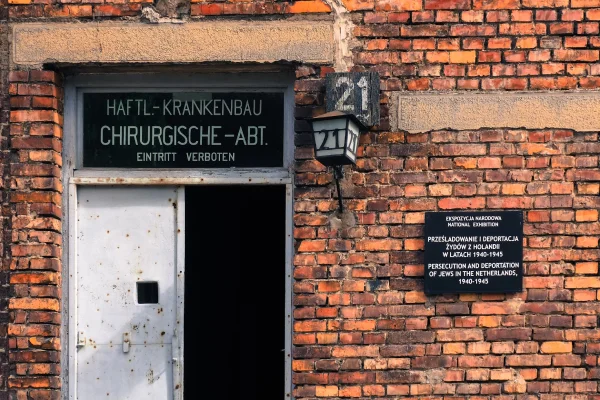Welcome to Auschwitz Tour Tickets

Support when you need it
Customer support to help you with everything you need from 8.00 a.m. to 7.00 p.m.

Fast and online booking
Choose the best option for your needs and preferences and avoid the lines booking here

#1 Attractions in Poland
Learn history in Auschwitz, a solemn memorial to the Holocaust atrocities.

Support when you need it

Fast and online booking

#1 Attractions in Poland
Visit Auschwitz
Auschwitz, located near the town of Oświęcim in southern Poland, stands as a poignant reminder of the atrocities committed during World War II. The Auschwitz-Birkenau complex, comprising Auschwitz I and Auschwitz II-Birkenau, was the largest of the Nazi concentration and extermination camps.
A tour of Auschwitz includes visits to both Auschwitz I and Auschwitz II-Birkenau. Guided tours are available in various languages and usually last about 3.5 hours. Visitors can see preserved barracks, gas chambers, crematoria ruins, and exhibitions displaying personal belongings of victims.

Auschwitz, located near the town of Oświęcim in southern Poland, stands as a poignant reminder of the atrocities committed during World War II. The Auschwitz-Birkenau complex, comprising Auschwitz I and Auschwitz II-Birkenau, was the largest of the Nazi concentration and extermination camps.
A tour of Auschwitz includes visits to both Auschwitz I and Auschwitz II-Birkenau. Guided tours are available in various languages and usually last about 3.5 hours. Visitors can see preserved barracks, gas chambers, crematoria ruins, and exhibitions displaying personal belongings of victims.
Everything you need yo know before visiting Auschwitz
Auschwitz was the largest and most notorious Nazi concentration and extermination camp complex during World War II. Established in 1940 near Oświęcim, Poland, it consisted of Auschwitz I (the main camp), Auschwitz II-Birkenau (a combined concentration/extermination camp), and Auschwitz III-Monowitz (a labor camp). Over 1.1 million people, primarily Jews, were murdered here.
Before visiting Auschwitz, it’s essential to be aware of the opening hours, location, map, and rules to ensure a respectful and informed visit. Understanding these details will help you navigate the site and fully appreciate the historical significance of this solemn memorial.
Auschwitz Museum is open year-round, except for January 1, December 25, and Easter Sunday. Opening hours vary by season: from April to October, it’s open from 7:30 AM to 7:00 PM; from November to March, hours are 7:30 AM to 2:00 PM. The last entry is 1.5 hours before closing… see more
Auschwitz is located in southern Poland, about 50 kilometers west of Krakow. The main site, Auschwitz I, is in the town of Oświęcim. Auschwitz II-Birkenau is about 3 kilometers away in Brzezinka. The site is accessible by car, bus, or train from major Polish cities… see more
A map of Auschwitz is crucial for understanding the layout of this vast complex. It typically shows the locations of key sites in both Auschwitz I and Auschwitz II-Birkenau, including the infamous “Arbeit Macht Frei” gate, prisoner barracks, gas chambers, and crematoria ruins… see more
Visitors to Auschwitz must adhere to strict rules out of respect for the victims and the solemnity of the site. Appropriate behavior and dress are required. Eating, smoking, and loud talking are prohibited in exhibition areas. Certain areas may have restrictions on photography… see more
Auschwitz Sites

The Auschwitz complex comprises several sites. Auschwitz I, the main camp, houses many of the exhibitions and preserved buildings. Auschwitz II-Birkenau, the largest part of the complex, was the primary extermination center and includes the infamous railway entrance. Auschwitz III-Monowitz was a labor camp associated with the IG Farben factory. There were also numerous sub-camps.
Auschwitz History

Auschwitz’s history is a dark chapter in human history. Established by Nazi Germany in 1940, it initially held Polish political prisoners. From 1942 on, it became a center for the “Final Solution”, the Nazi plan to exterminate European Jews. Prisoners arrived by train and were either selected for forced labor or immediately sent to gas chambers.




